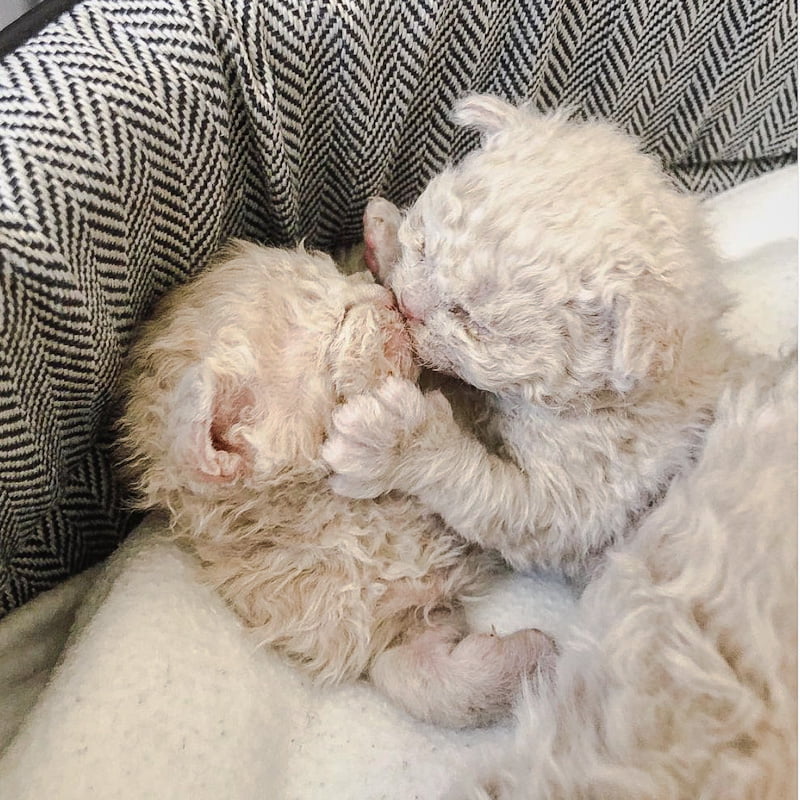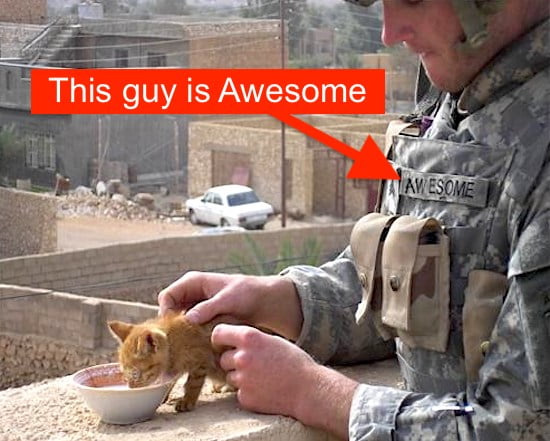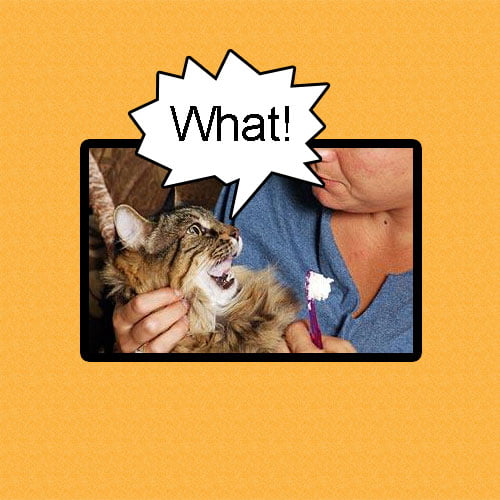With reference to domestic and feral cats, mothers do not abandon their newborn kittens if you touch them. But the question opens the door to a much bigger topic and before I address that topic, I will expand on the first sentence.
Most queens (intact female cat usually used for breeding) become anxious “when their very young kittens are constantly handled by unknown people”. Also, feline mothers become anxious “if unfamiliar pets or other household animals they are not comfortable with are allowed near their kittens”. The quotes come from the veterinarians who wrote the book Cat Owner’s Home Veterinary Handbook. However, they don’t abandon the kittens. Cat breeders handle the young kittens of their queens.
A feral queen may move her kittens to a new den if they are touched and interfered with by a person or persons (more on feral cats at base of page).

Socialisation
Kittens of certain age need to be touched which turns the question in the title on its head. There is the very strong argument that kittens need to be touched by humans in order to socialise them. Kittens need to be handled by humans by 7 weeks of age at the latest. Those first early weeks are very important to domesticate kittens. Socializing kittens is domesticating them. Without that human touch and interaction, they will be fearful in the human environment.
This crucial socialisation of kittens takes place between 3-9 weeks of age.
Weaning
Clearly kitten should not be removed from their mother until they are weaned. There are many stories of early weaning behavioural problems on the Internet such as wool sucking. These can be permanent behavioural problems so don’t remove kittens from their mother to early. A veterinarian would state that “in general kittens can be started on weaning when they are about 25 days old”. It does depend, though, on several factors including the size of the letter, the availability of her milk and the condition of the mother. Weaning is vital so don’t interfere with the natural process.

Feral cats
Obviously, it is better for kittens born to feral cats to be socialised and domesticated. Therefore, provided the kittens are not removed from their mother before they are weaned, they should be handled by people and in effect integrated into the human world to allow them to be adopted as domestic cats. I would not touch the kittens of a feral cat mother unless there are pressing health issues. Let nature takes its course until the need to be domesticated. However, you often see young feral kittens rescued by volunteers.
Early handling-other benefits
There are other benefits to handling kittens which I think, actually, are important in the human-to-cat relationship. How many cat owners have difficulty trimming their cat’s nails? If you trim the nails of a kitten weekly, they become habituated to it. They may even enjoy it and going forward into adulthood they will at least accept it. The same goes for grooming kittens. Although adult cats like being groomed in any case, once again it’s about familiarising the kitten to human handling and these activities.
You can check for fleas and other parasites. You can check the health of their eyes, ears and skin. You can check the development of their teeth. And check the bite to be sure the adult teeth are coming in properly.
Dental hygiene
Perhaps the most important aspect of early handling is dental hygiene. There’s a lot of poor oral health among domestic cats. It is in the top 10 health problems for domestic cats. It’s understandable. They don’t clean their teeth like humans and some say that the wet cat food that they eat is not great for gum health. That said, the oral care dry cat food is not particularly good either. However, personally, I would recommend Hills Oral Care as I think it does help promote gum health, which I think is very important because there’s too many examples of gingivitis in domestic cats.

In retrospect, I wish I had brushed my cat’s teeth when he was 7 weeks old. If I had, I would be able to do it today. Very few people brush their adult cat’s teeth. If they did, there would be better feline oral and dental health generally. If you start a regime of toothbrushing your cat when he or she is a kitten they get used to the procedure. Without that introduction to it it’s all but impossible to do.
There is a plethora of toothpastes and devices to clean a cat’s teeth on the Internet. Don’t use dental products designed for people on cats as they are inappropriate. Cat toothpaste is flavoured to make it more attractive to cats. If you are unsure ask your veterinarian.
Veterinarians would suggest that with a kitten you gradually build up to teeth brushing by firstly rubbing the cat’s muzzle over the teeth which is a bit like face rubbing. Then you progress to raising the lip and massaging the gums with your finger. The next step is to wrap a piece of gauze around your finger and gently rub the kitten’s teeth and gums. You can then introduce a soft toothbrush made for a young child. Or use a fingertip brush design for cats. If it doesn’t work use a gauze pad around your finger and put some toothpaste on it. It’s a matter of using common sense and gradually familiarising your cat with toothbrushing. The focus should be on those areas where gingivitis occurs which is at the top back outside gum line on both sides.
It’ll be time well spent and it’ll improve your cat’s health in the future and possibly save on vet’s bills. Incidentally, the same area is vulnerable to gum disease in people which is why if there is bleeding it occurs from that place.
The conclusion is that kittens need to be handled in various ways with gentleness, which in some ways turns the question in the title on its head.

